Abstract
In three experiments, pigeons chose between two alternatives that differed in the probability of reinforcement and the delay to reinforcement. A peck at a red key led to a delay of 5 s and then a possible reinforcer. A peck at a green key led to an adjusting delay and then a certain reinforcer. This delay was adjusted over trials so as to estimate an indifference point, or a duration at which the two alternatives were chosen about equally often. In Experiments 1 and 2, the intertrial interval was varied across conditions, and these variations had no systematic effects on choice. In Experiment 3, the stimuli that followed a choice of the red key differed across conditions. In some conditions, a red houselight was presented for 5 s after each choice of the red key. In other conditions, the red houselight was present on reinforced trials but not on nonreinforced trials. Subjects exhibited greater preference for the red key in the latter case. The results were used to evaluate four different theories of probabilistic reinforcement. The results were most consistent with the view that the value or effectiveness of a probabilistic reinforcer is determined by the total time per reinforcer spent in the presence of stimuli associated with the probabilistic alternative. According to this view, probabilistic reinforcers are analogous to reinforcers that are delivered after variable delays.
Full text
PDF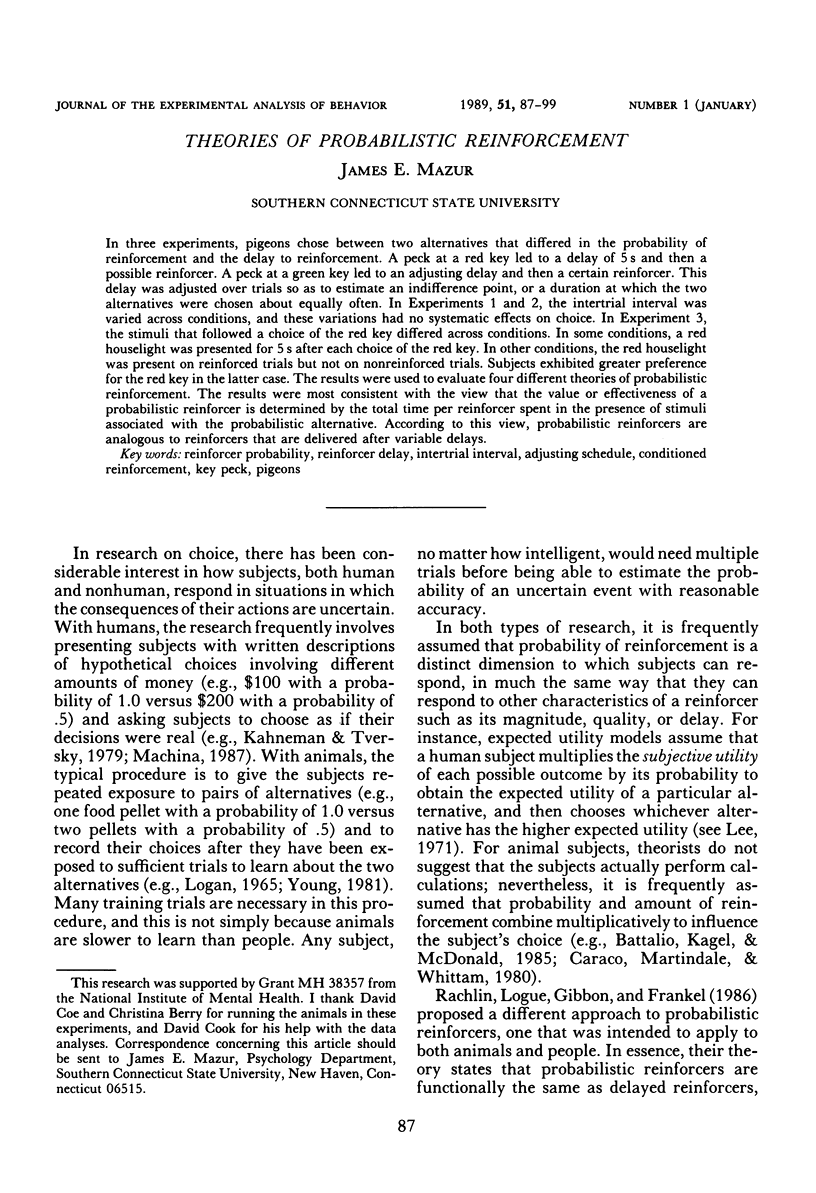
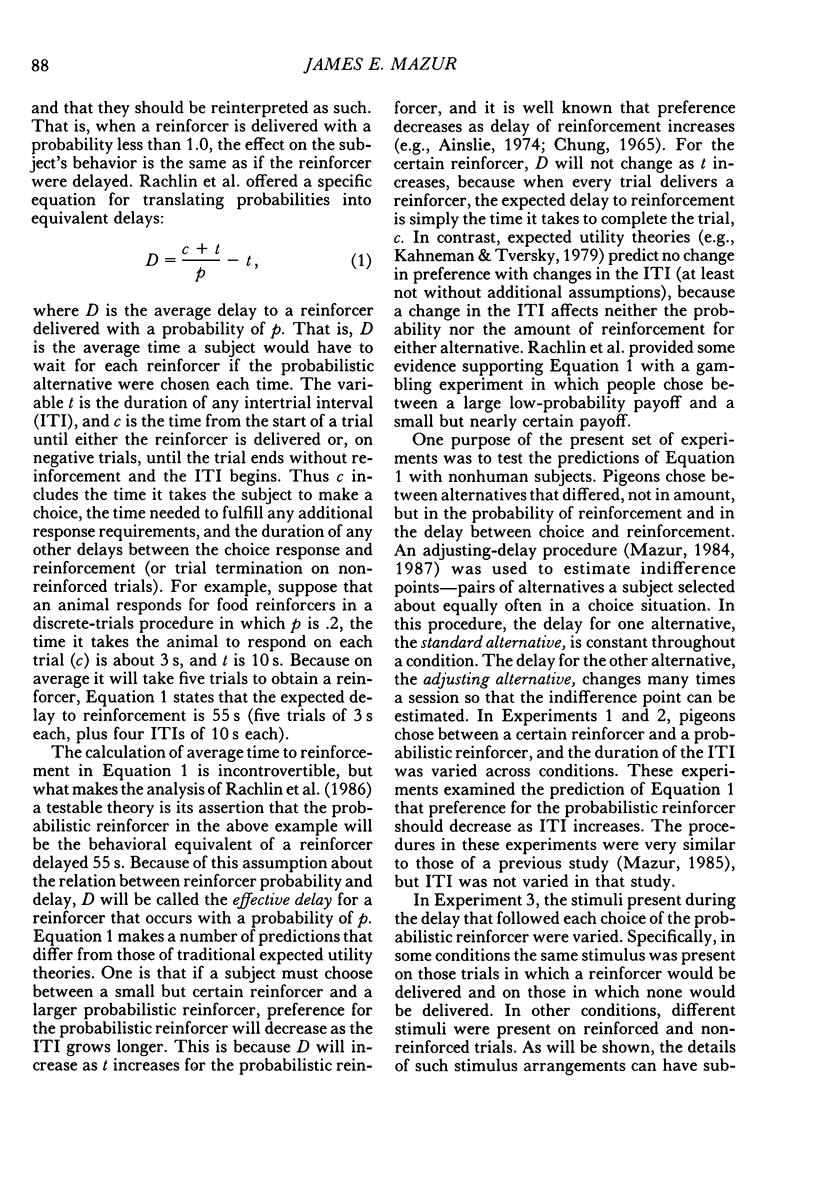

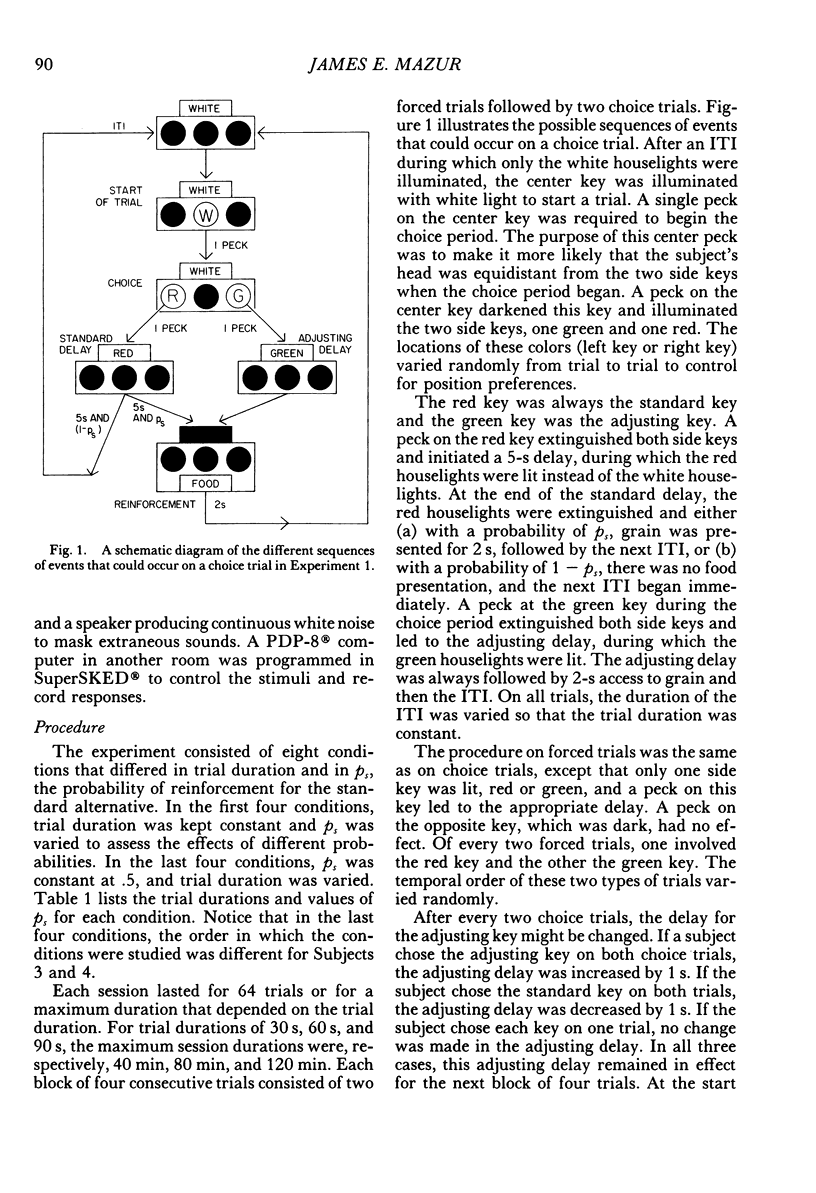
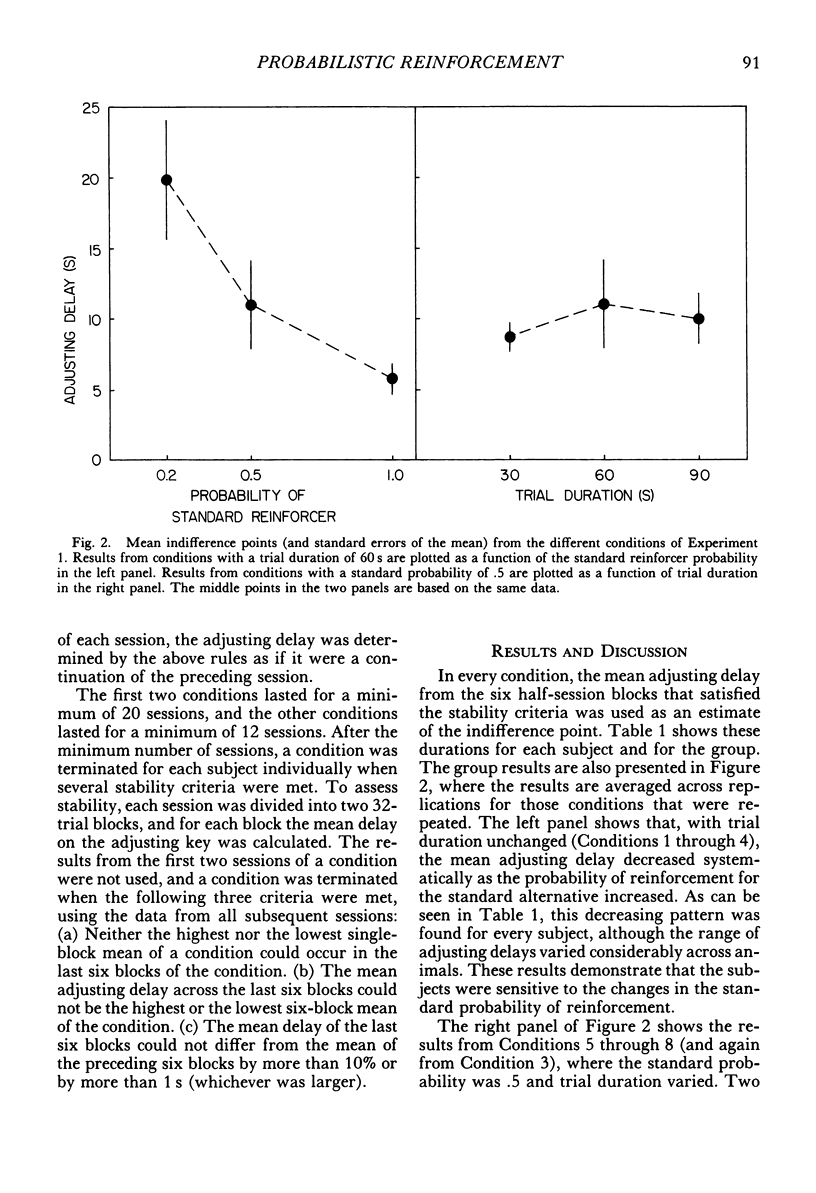
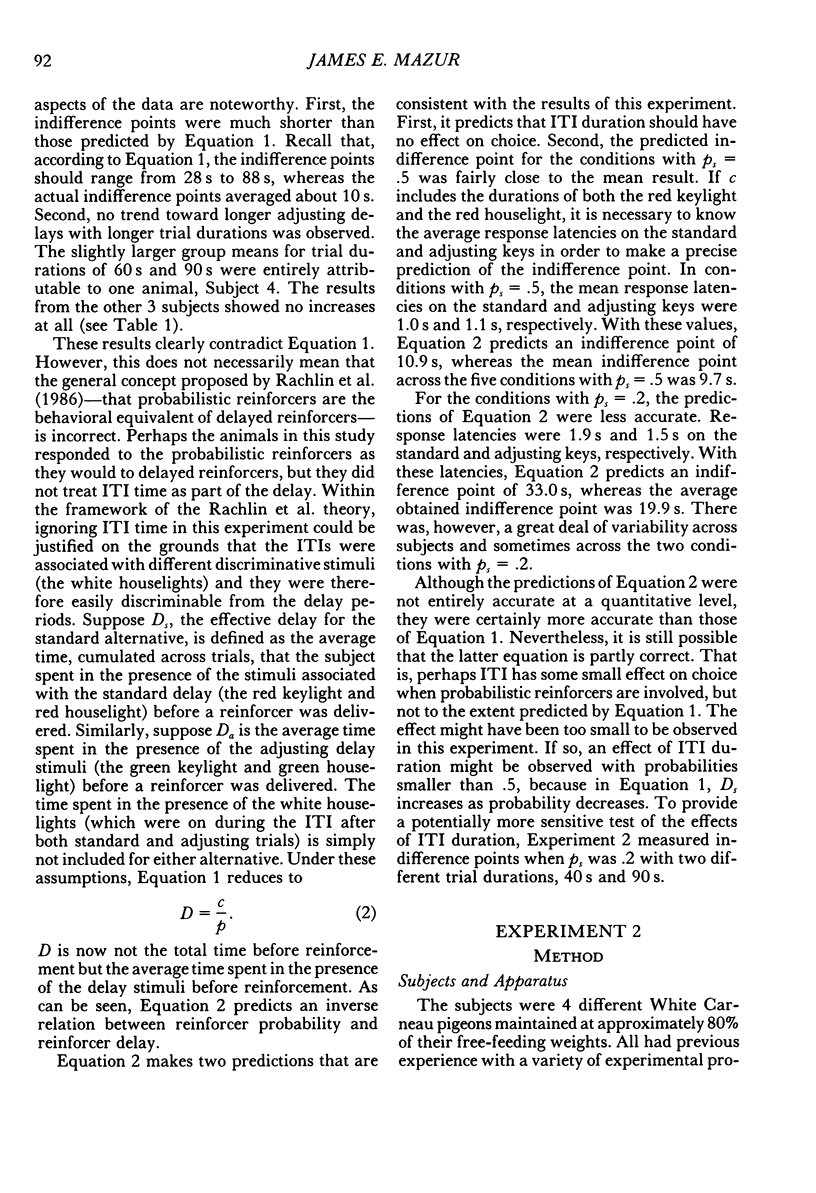
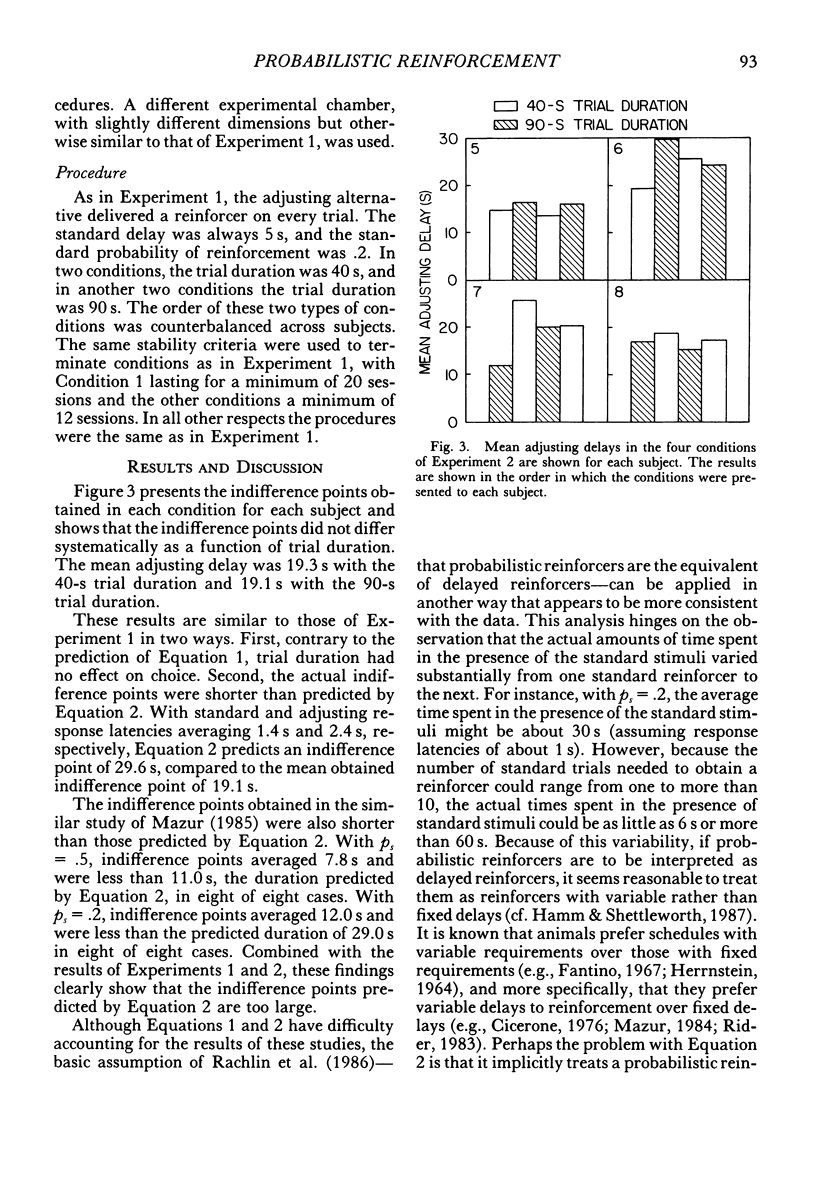

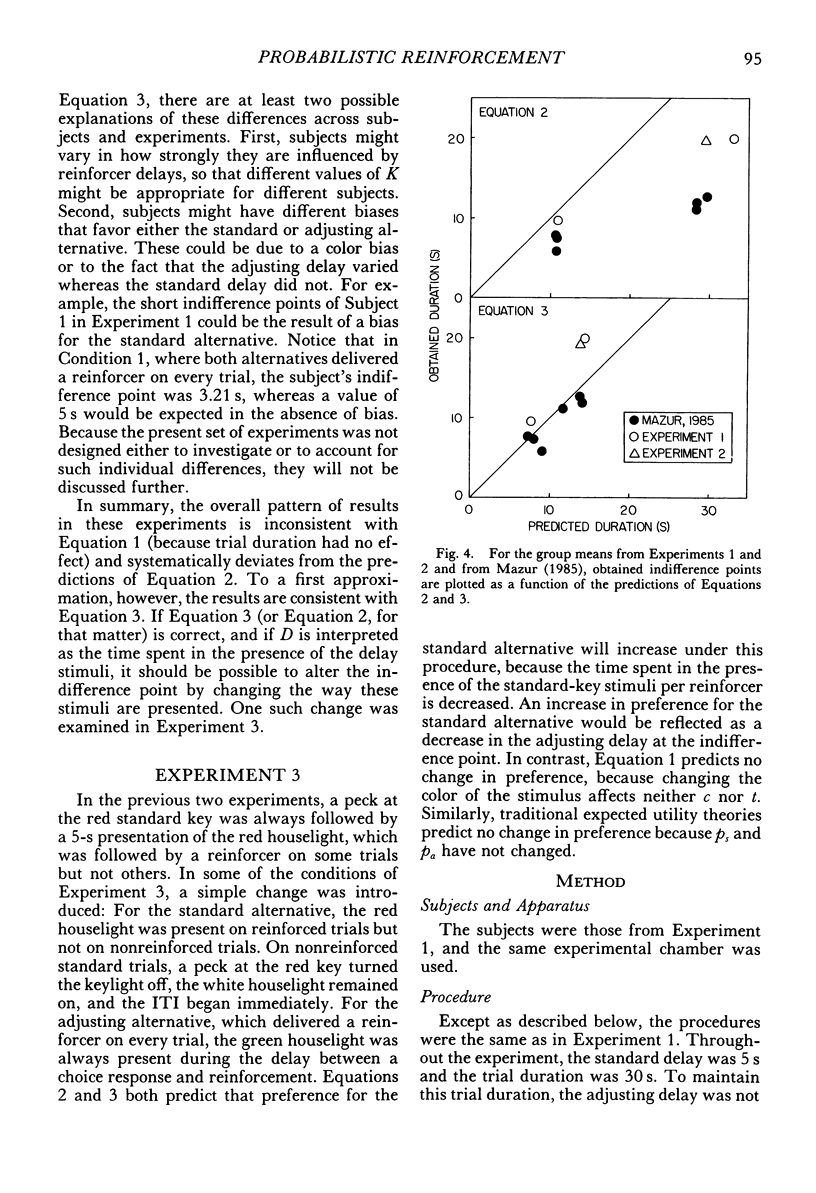
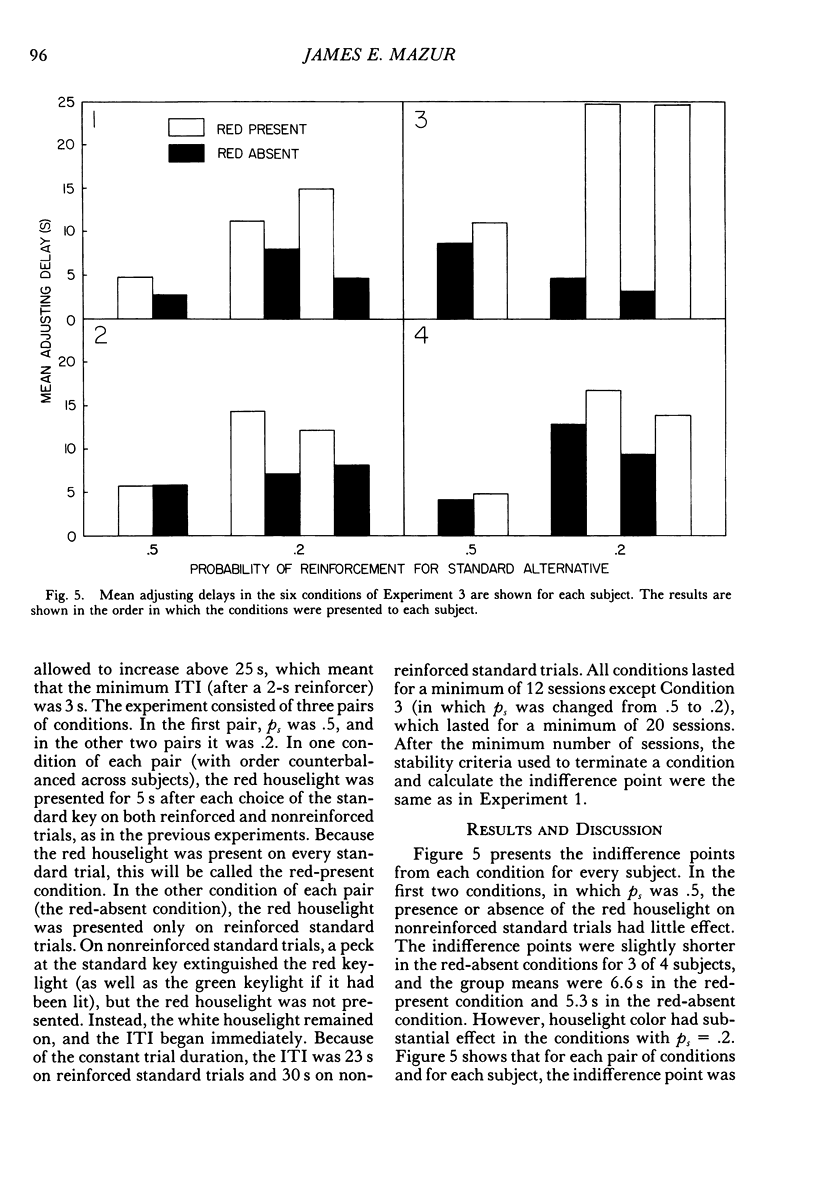

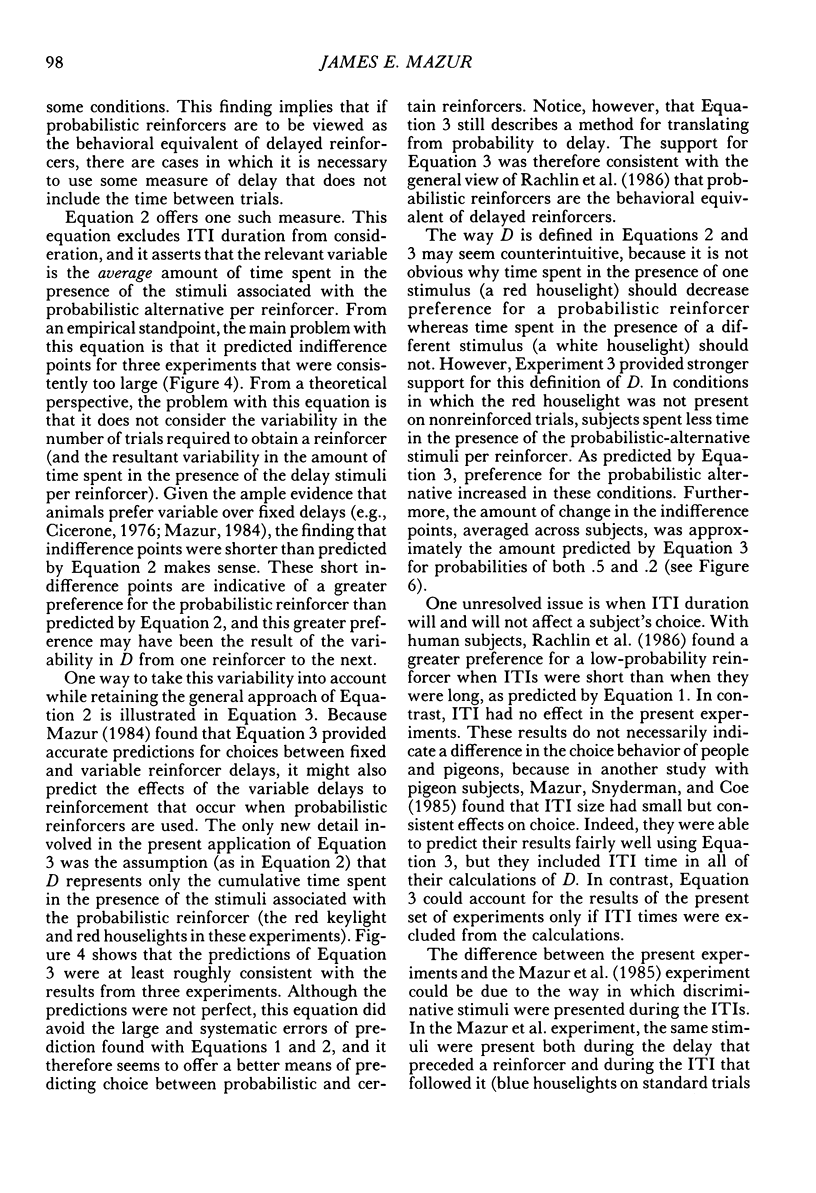
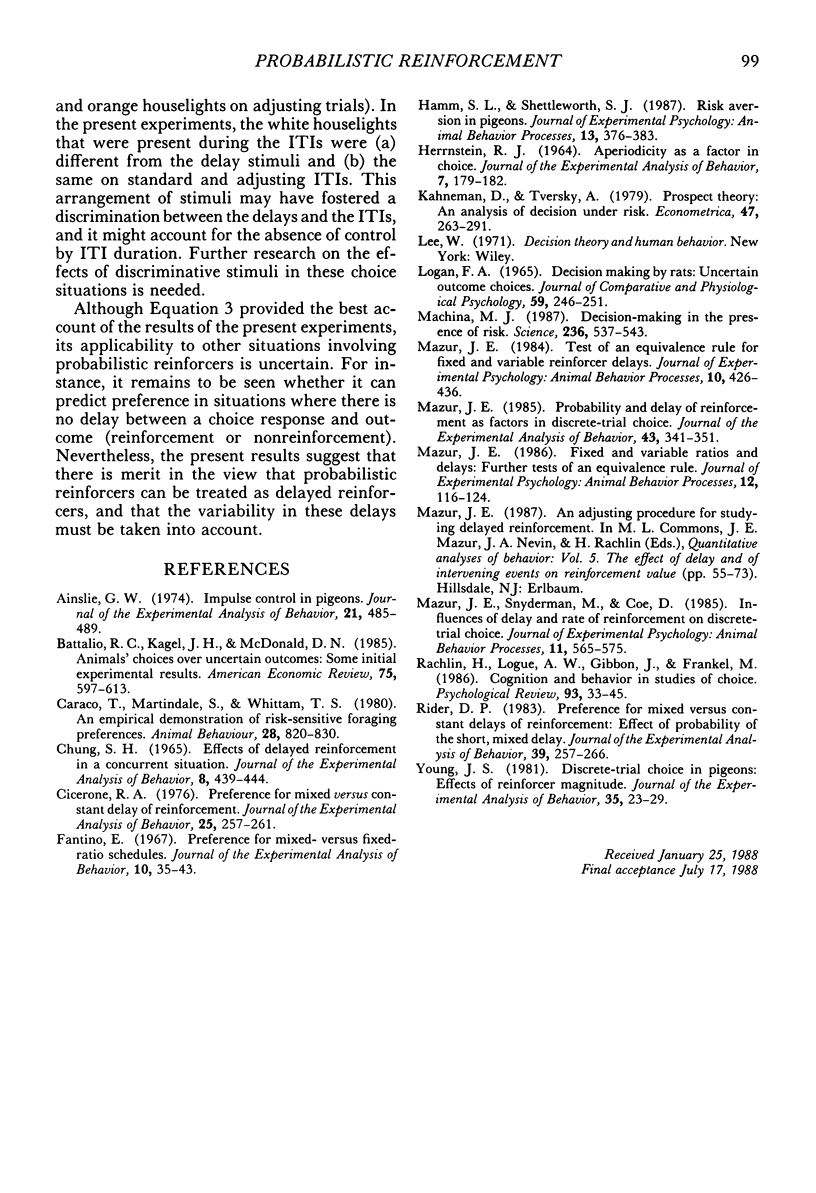
Selected References
These references are in PubMed. This may not be the complete list of references from this article.
- Ainslie G. W. Impulse control in pigeons. J Exp Anal Behav. 1974 May;21(3):485–489. doi: 10.1901/jeab.1974.21-485. [DOI] [PMC free article] [PubMed] [Google Scholar]
- Chung S. H. Effects of delayed reinforcement in a concurrent situation. J Exp Anal Behav. 1965 Nov;8(6):439–444. doi: 10.1901/jeab.1965.8-439. [DOI] [PMC free article] [PubMed] [Google Scholar]
- Cicerone R. A. Preference for mixed versus constant delay of reinforcement. J Exp Anal Behav. 1976 Mar;25(2):257–261. doi: 10.1901/jeab.1976.25-257. [DOI] [PMC free article] [PubMed] [Google Scholar]
- Fantino E. Preference for mixed- versus fixed-ratio schedules. J Exp Anal Behav. 1967 Jan;10(1):35–43. doi: 10.1901/jeab.1967.10-35. [DOI] [PMC free article] [PubMed] [Google Scholar]
- HERRNSTEIN R. J. APERIODICITY AS A FACTOR IN CHOICE. J Exp Anal Behav. 1964 Mar;7:179–182. doi: 10.1901/jeab.1964.7-179. [DOI] [PMC free article] [PubMed] [Google Scholar]
- LOGAN F. A. DECISION MAKING BY RATS: UNCERTAIN OUTCOME CHOICES. J Comp Physiol Psychol. 1965 Apr;59:246–251. doi: 10.1037/h0021850. [DOI] [PubMed] [Google Scholar]
- Machina M. J. Decision-making in the presence of risk. Science. 1987 May 1;236(4801):537–543. doi: 10.1126/science.236.4801.537. [DOI] [PubMed] [Google Scholar]
- Mazur J. E. Fixed and variable ratios and delays: further tests of an equivalence rule. J Exp Psychol Anim Behav Process. 1986 Apr;12(2):116–124. [PubMed] [Google Scholar]
- Mazur J. E. Probability and delay of reinforcement as factors in discrete-trial choice. J Exp Anal Behav. 1985 May;43(3):341–351. doi: 10.1901/jeab.1985.43-341. [DOI] [PMC free article] [PubMed] [Google Scholar]
- Mazur J. E., Snyderman M., Coe D. Influences of delay and rate of reinforcement on discrete-trial choice. J Exp Psychol Anim Behav Process. 1985 Oct;11(4):565–575. [PubMed] [Google Scholar]
- Rider D. P. Preference for mixed versus constant delays of reinforcement: Effect of probability of the short, mixed delay. J Exp Anal Behav. 1983 Mar;39(2):257–266. doi: 10.1901/jeab.1983.39-257. [DOI] [PMC free article] [PubMed] [Google Scholar]
- Young J. S. Discrete-trial choice in pigeons: Effects of reinforcer magnitude. J Exp Anal Behav. 1981 Jan;35(1):23–29. doi: 10.1901/jeab.1981.35-23. [DOI] [PMC free article] [PubMed] [Google Scholar]


